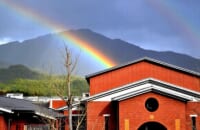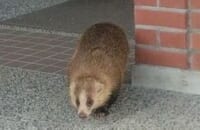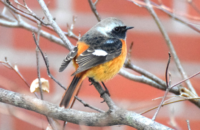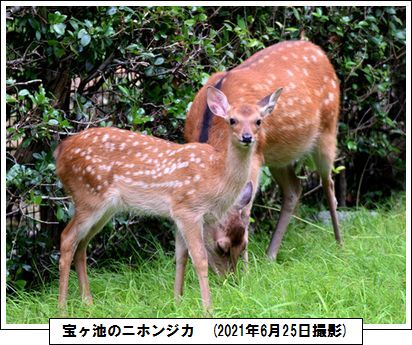
ある晩、京都国際会館前のアルファルト道路に立ち尽くす大きな影!? 一体何もの!?一瞬ドキっとしました。通行中の車も一旦停止…。
この影の正体はニホンジカ(Cervus nippon)でした。現在、全国的に数が増え、シカによる「害」も報道されるようになりました。「害」と思っているのはきっとヒトだけですが、宝ヶ池の南西側にある深泥池では、ある日22頭ものシカが目撃され、氷河期の遺存植物ミツガシワが食べられ、天然記念物の池の自然が危機に瀕しています。
シカが食べるものは下草以外にも、ヒイラギなどの固く尖った葉や、最近はアセビという毒性のある葉まで食べているそうです。
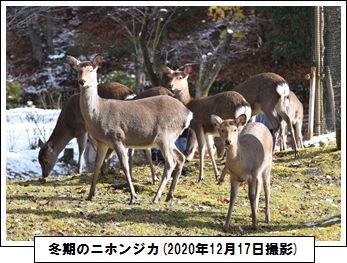 奈良公園では「神の使い」として大切にされ、国の天然記念物に指定されている動物です。
奈良公園では「神の使い」として大切にされ、国の天然記念物に指定されている動物です。
学校の近くの宝ヶ池公園でもシカとヒトの理想的な共存関係が育まれたらいいと思います。それにはヒトの側の長期的な科学的な分析が必要でしょう。
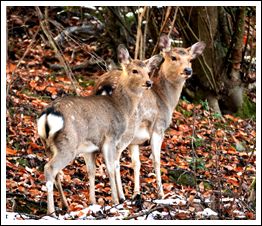
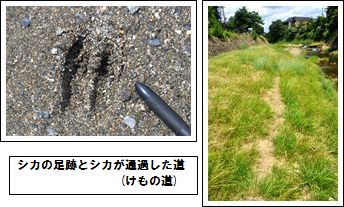
One evening, when I was walking past the Kyoto International Conference Hall, I saw something to the side of the road and got a surprise. Some cars had even stopped.
What I saw was a Sika deer. Recently, the number of deer have been increasing around the country, and we can often see on the news about the damage that they cause, so a lot of people probably think the deer cause a lot of problems. One day, in the Mizorogaike part in the south west of Takaragaike 22 deer were seen, and they were eating the Bogbean which is a living fossil from the Ice Age, putting this national treasure in great danger.
As well as eating the undergrowth, the deer eat spiny leaves such as Holly and lately they have also been seen eating the poisonous Japanese Andromeda.
In Nara Park the deer are looked after and are known as “Messengers from God”, and they have been classed as a natural treasure..
I hope that an ideal coexistence between the deer and humans can be nurtured in Takaragaike Park, which is near our school. In order to do this, the humans need to scientifically analyze the situation over time.
《Words》 ニホンジカ Sika deer、氷河期 Ice age、深泥池 Mizorogaike pond、天然記念物 natural treasure、京都国際会館 Kyoto International Conference Hall
